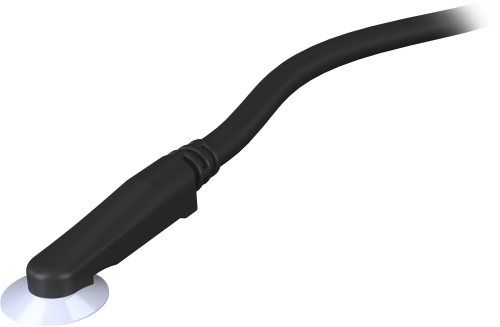This product has limited availability. It will be replaced by: CS241. Some accessories, replacement parts, or services may still be available when it is no longer available.







Überblick
Der CS240 ist ein PT1000 Klass A in robuster Ausführung zum Anbringen an einer Oberfläche. Er wird vor allem in der Solarindustrie eingesetzt um die Temperatur der Modulrückwand zu erfassen. Der RTD ist in einem speziell designten Aluminiumgehäuse untergebracht, um auch extremen Bedingungen zu widerstehen.
Lesen Sie mehrFunktionen und Vorteile
- Precision Pt-1000 Class A sensing element
- Compliant with IEC 60751, DIN EN 60751 (according to IEC 751)
- Various cable lengths available
- Rugged design holds up in harsh conditions and conduit installations
- Self-adhesive backing for easy mounting that lasts decades
- 2-wire and 4-wire configuration to satisfy data logger channel count and accuracy—even at long cable lengths
- Quick sensor head connection for easier installation and replacement
- NIST traceability provided with purchase of optional 3-point temperature calibration
Bilder










Technische Beschreibung
The CS240 consists of a Pt-1000 class A PRT encased in an aluminum disk. The disk protects the PRT, particularly during installation when pulled through conduit, and promotes heat transfer from the surface. An adhesive tab on the disk fastens the CS240 to the measurement surface. If the temperature may exceed 70°C, Extreme sealing tape is also required to secure the probe.
The CS240 provides PV stakeholders with highly accurate back-of-module temperature, even at long cable lengths, for use in power performance modeling and simulation of solar energy applications. Back-of-module temperature is critical for any evaluation of effective irradiance and power conversion.
Spezifikationen
| Sensor | 1000 Ω DIN Class A RTD |
| Measurement Description | Back-of-module temperature |
| Operating Temperature Range | -40° to +135°C |
| Cable Temperature Rating | 105°C |
| Class A PRT Accuracy | ± (0.15 + 0.002T) |
| Temperature Coefficient | TCR = 3850 ppm/K |
| Element Type | Precision 1000 ohm Class A platinum sensing element (Pt-1000) |
| Long-Term Stability | Maximum Ro drift 0.04% (after 1000 h at 400°C) |
| Measuring Current | 0.1 to 0.3 mA |
| Disk Material | Anodized aluminum |
| Cable Jacket Material | Black semi-gloss PVC, UL VW-1 sunlight-resistant for outdoor use |
| Sensitivity | ±0.06 Ω or ±0.15°C |
| Disk Diameter | 2.54 cm (1.0 in.) |
| Overall Probe Length | 6.35 cm (2.5 in.) |
| Overmolded Joint Dimensions | 5.72 x 1.12 x 1.47 cm (2.25 x 0.44 x 0.58 in.) |
| Weight | 90.7 g with 3.2 m cable (0.2 lb with 10.5 ft cable) |
Conductors |
|
| Wire Size and Type | 24 AWG (7/32) tinned copper |
| Insulation Type | PVC |
| UL | AWM 10012 1000V 105°C |
| Filler | Fibrillated polypropylene as required for uniform round construction |
| Drain | 24 AWG (7/32) tinned copper (cabled, touching foil) |
| Shield | Aluminum/Mylar (100% coverage, 25% minimum overlap, foil facing in) |
| Nominal Wire Diameter | 0.61 mm (0.024 in.) |
Compliance |
|
| -NOTE- | Compliance information can be found in the Documents section of the web page. |
| Approvals | UL AWM 2586 1000V 105°C; CSA AWM 600V 105°C FT |
| EMC Compliance | Conforms with Electromagnetic Compatibility Directive (EMC). |
| RoHS2 | Conforms with the Restriction of Hazardous Substances Directive (RoHS2). |
Videos & Tutorials
FAQs für
Number of FAQs related to CS240: 3
Alle anzeigenWenige anzeigen
-
A hot spot is caused if a cell in series is under-producing due to shading and gets reversed bias due to the other producing cells. For bifacial modules, as long as the front face is not shaded, all the cells should be producing and covering a small area on the back side and should not cause a severe mismatch.
-
Even when three-pt calibration isn’t ordered, when we build the probes, we perform a final test to verify that they are reading within 0.3°C of our calibrated reference sensor at room temperature.
-
NIST traceability provides an assurance of accuracy. This is especially desirable in accordance with IEC 61724, which is a solar energy generation monitoring specification that requires calibrated sensors.


